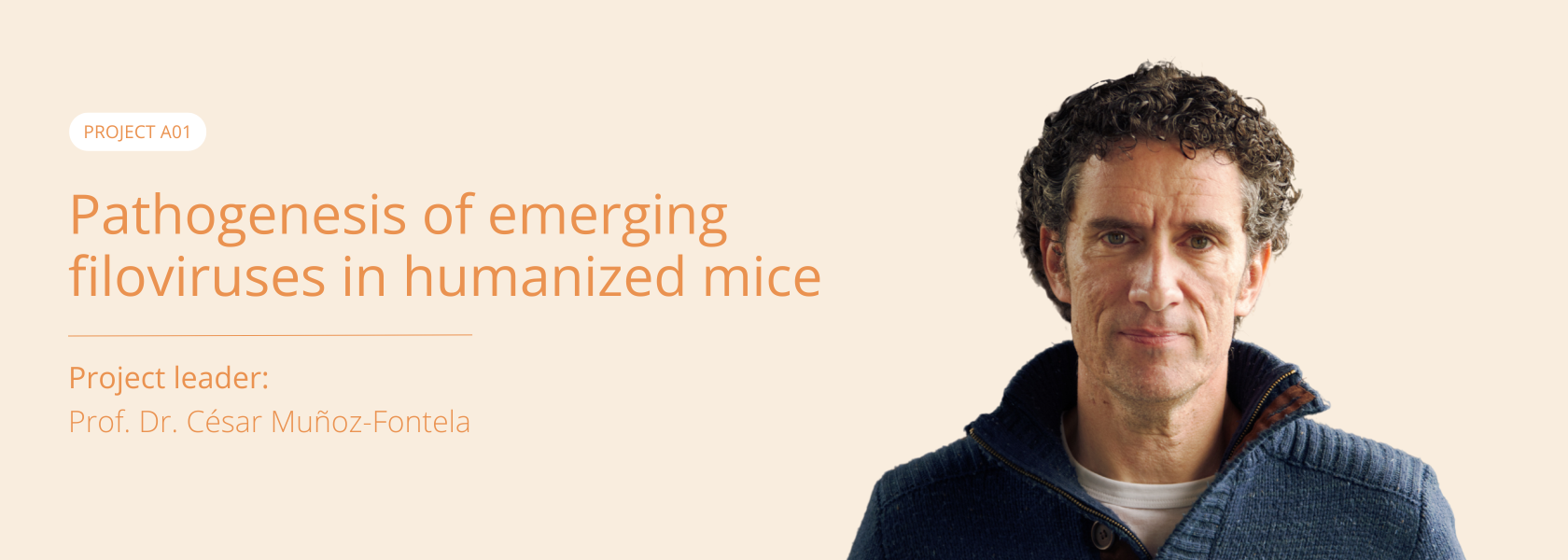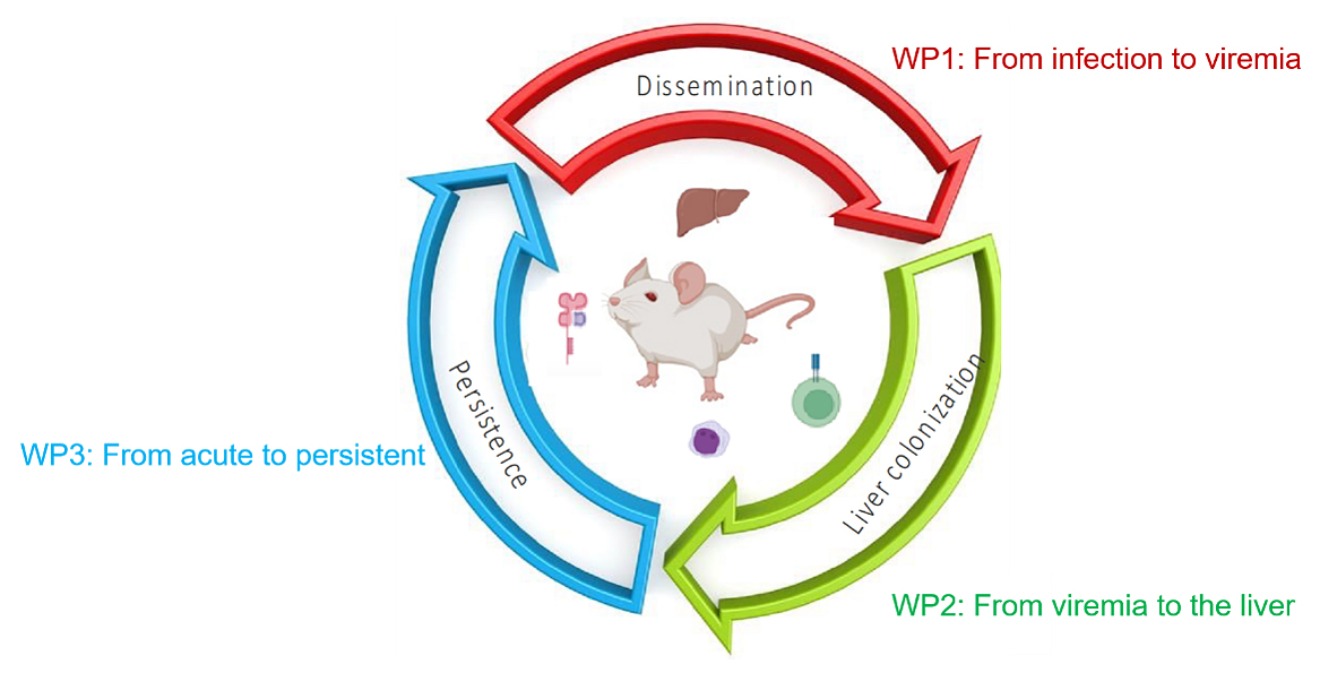

Pathogenesis of emerging filoviruses in humanized mice
Summary
Ebola-related viruses belong to a larger family of filoviruses, some of which, like Ebola virus (EBOV), can cause severe disease in humans. However, other members, such as Reston virus (RESTV) and Tai Forest virus (TAFV), remain poorly understood, and their potential to cause illness is unclear. This project aims to determine how these viruses spread in the body, whether they can infect and persist in key organs like the liver, and how their behavior compares to EBOV.
To study this, we use advanced laboratory models in which mice are equipped with human immune and liver cells, allowing us to mimic how these viruses might behave in the human body. By identifying critical steps in their infection process, we hope to better assess the risks posed by poorly characterized filoviruses and contribute to the early detection and prevention of potential future outbreaks.

Our Work Packages (WP):
WP1: From infection to viremia - investigating how different Ebola-related viruses spread in the body after infection.
WP2: From viremia to liver - analyzing virus replication and damage in the liver using mice with human immune and liver cells.
WP3: From the liver to the brain - exploring the transitions between acute infection, possible persistence and long-term consequences in the body.
These work packages help us to better understand the differences between EBOV, RESTV and TAFV and to assess the potential risk of new filoviruses for humans.
Team


Prof. Dr. Prof. Dr. César Muñoz-Fontela
Principal Investigator
E-mail address:
Phone: +49 40 285380-548

Research Group Muñoz-Fontela
The Research Group Virus Immunology is based at the Bernhard Nocht Institute for Tropical Medicine Hamburg.
Project related publications
Muñoz-Fontela C, Dowling WE, Funnell SGP, …, Vassan SS, Henao-Restrepo AM, Barouch DH. Animal models for COVID-19. Nature. 2020;586:509-515. doi: 10.1038/s41586-020-2787-6.
Escudero-Pérez B, Ruibal P, Rottstegge M, …, Krasemann S, Rodríguez E, Muñoz-Fontela C. Comparative pathogenesis of Ebola virus and Reston virus infection in humanized mice. JCI Insight. 2019;4:73. doi: 10.1172/jci.insight.126070.
Escudero-Pérez B, Muñoz-Fontela C. Role of Type I Interferons on Filovirus Pathogenesis. Vaccines. 2019;7:22. doi: 10.3390/vaccines7010022.
Munster VJ, Bausch DG, de Wit E, …, Muñoz-Fontela C, …, Ntoumi F, Massaquoi M, Mombouli JV. Outbreaks in a Rapidly Changing Central Africa-Lessons from Ebola. N Engl J Med. 2018;379:1198–201. doi: 10.1056/NEJMp1807691.
Lüdtke A, Ruibal P, Wosniak DM, …, Idoyaga J, Oestereich L, Muñoz-Fontela C. Ebola virus infection kinetics in chimeric mice reveal a key role of T cells as barriers for virus dissemination. Sci Rep. 2017;7:43776. doi: 10.1038/srep43776.
Muñoz-Fontela C, McElroy AK. Ebola Virus Disease in Humans: Pathophysiology and Immunity. Curr Top Microbiol Immunol. 2017;204:796–29. doi: 10.1007/82_2017_11.
Ruibal P#, Oestereich L#, Lüdtke A#, Becker-Ziaja B#, …, Addo MM, …, Carroll MW, Günther S#, Muñoz-Fontela C#. Unique human immune signature of Ebola virus disease in Guinea. Nature. 2016;533:100–4. doi: 10.1038/nature17949.
Carroll MW, Matthews DA#, Hiscox JA#, …, Muñoz-Fontela C, ..., Oestereich L, …, Wölfel R, Formenty P, Günther S. Temporal and spatial analysis of the 2014-2015 Ebola virus outbreak in West Africa. Nature. 2015;524:97–101. doi: 10.1038/nature14594.
Lüdtke A#, Oestereich L#, Ruibal P, …, Rodríguez E, Günther S, Muñoz-Fontela C. Ebola virus disease in mice transplanted with human hematopoietic stem cells. J Virol. 2015;89:4700-4. doi: 10.1128/JVI.03546-14.
#equally contributing authors